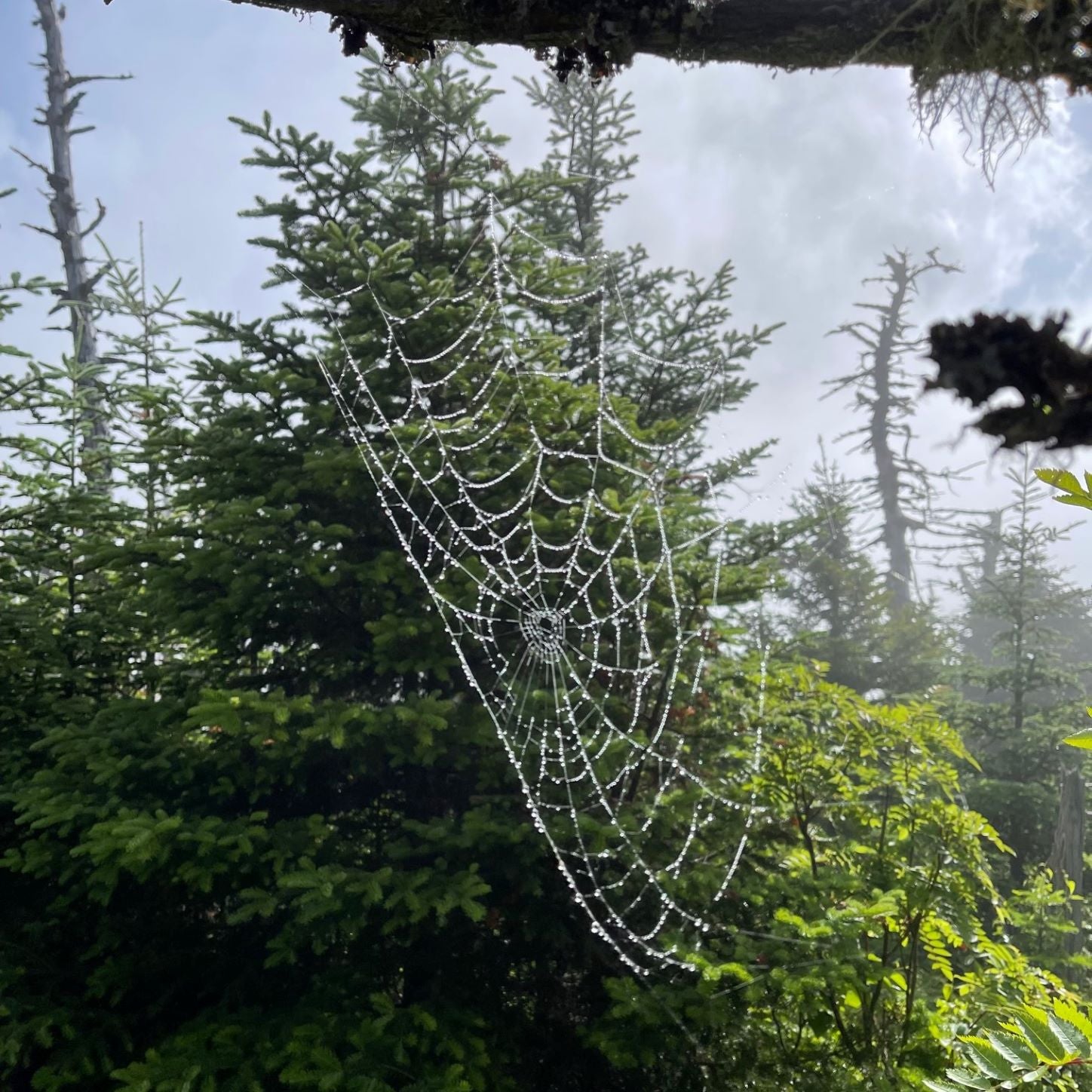Unless you’re wired differently, hiking in the rain is never fun. You’re constantly battling to stay dry, the views marginal or nowhere to be found, and in some cases the trail may become slippery or even dangerous.
Yet if you’re looking to complete the 48 4,000-footers in New Hampshire, chances are at some point you’re going to find yourself out in the rain. The good news is if you plan ahead there are some hikes that lend themselves better to rainy days than others, so you can brave the elements and work towards your 48 without wasting a beautiful view.
So if you’re looking for a peak to hike the next time the forecast doesn’t look great, here are a few places to start.
Mt. Hale
Elevation: 4,054 feet
Recommended Route: Hale Brook Trail
This is by far the most popular rainy day hike in the White Mountains and it’s not hard to see why. Mt. Hale’s summit is completely wooded and there are virtually no views along the trail, so rain or shine your experience is largely going to be the same.
Mt. Hale is also one of the quickest hikes of the 4,000-footers, with a round-trip to the summit and back via the Hale Brook Trail clocking in at only 4.1 miles. The trail is somewhat steep, gaining around 2,250 feet over roughly two miles to the summit, but the footing is good throughout to it’s generally considered one of the easier hikes on the 4,000-footers list.

Mt. Tecumseh
Elevation: 4,003 feet
Recommended Route: Mt. Tecumseh Trail (via Waterville Valley Ski Resort)
Mt. Tecumseh is similar to Mt. Hale in that it is a straightforward, quick and relentless climb to the top, but Tecumseh also has a couple of viewpoints that make it worthwhile on a nice day.
Why not save this for when it’s sunny then? One of those viewpoints is from the side of a ski trail, which offers a unique and almost spooky perspective of the surrounding valley if you get it with just the right cloud cover. Plus, the summit view out into Waterville Valley is nice, but you can find better views of the same area from Osceola.
In terms of the trail itself, you’ll climb about 2,180 feet from the trailhead to Tecumseh’s summit. Hikers should know this climb is tougher than its reputation, especially the second half past the ski trail view point, but the 4.8-mile round trip goes quickly, especially on the descent.

Tom-Field-Willey
Elevation: 4,051 (Tom), 4,340 (Field), 4,285 (Willey)
Recommended Route: Avalon Trail, A-Z Trail, Mt. Tom Spur, Willey Range Trail, Avalon Trail
If you’re in the mood to check a bunch of peaks off your list, the Tom-Field-Willey traverse is probably your best bet. The Willey Range does not boast great views and while there are a handful of nice viewpoints, particularly below Mt. Willey’s summit, you’ll spend most of your hike in the trees.
This is a much longer hike than Hale or Tecumseh, but is pretty standard compared to the rest of the 4,000-footers. The route outlined above is 9.2 miles with roughly 3,450 feet of elevation gain, the majority coming on the initial ascent of Mt. Tom. The route also allows for a natural bailout point at Mt. Field, so if you’re not up for the out and back to Mt. Willey you can just descend the Avalon Trail and come back for Willey another day.

Middle-South Carter
Elevation: 4,430 (South Carter), 4,610 (Middle Carter)
Recommended Route: Nineteen Mile Brook Trail, Carter Dome Trail, Carter-Moriah Trail, North Carter Trail, Imp Trail, Camp Dodge Cutoff and Route 16 road walk.
Unless you’re completing a full traverse of the Carter-Moriah Range, Middle and South Carter can be a bit of a chore, so getting these together on a rainy day is often a good call. The two peaks don’t have much in the way of views, but they do offer the chance to bag two 4,000-footers in one go, and two of the top 20 in elevation as well.
There are a couple of ways to go about reaching South and Middle Carter, but most of the routes average around 10-12 miles with 3,300 feet of elevation gain. If you’re feeling adventurous, the loop described above involves taking the Camp Dodge Cutoff off the Imp Trail, allowing for a short road walk on Route 16 back to the Nineteen Mile Brook trailhead. If you’d rather keep to established trails, you can always just retrace your steps from Middle Carter back the way you came.
Hancock-South Hancock
Elevation: 4,420 (Hancock), 4,319 (South Hancock)
Recommended Route: Hancock Notch Trail, Cedar Brook Trail, Hancock Loop Trail and back
This hike has a little bit of everything for a rainy-day peakbagger. You can get both Hancock summits in one quick loop and the majority of the route is flat and under tree cover, offering protection from the elements.
Overall the hike is 9.1 miles with around 2,690 feet of elevation, almost all of which comes on the last climb up to Hancock’s summit. No matter which direction you take from the point where the loop splits, the trail is quite steep, and if you go up the main summit first you’ll actually drop a bit before the real climb begins. That is, unfortunately, the price of having an easy first three miles of trail, but once you’re up to Hancock’s ridgeline the rest is fairly straightforward.
Helpful links for planning your next hike:
Other Hiking Related Blog Posts:
Shop Burgeon Products:

Burgeon Outdoor was founded in 2019. Burgeon’s mission is to help mountain communities flourish. Burgeon proudly manufactures premium outdoor apparel in Lincoln, NH. By manufacturing locally, Burgeon creates year round jobs in the White Mountains. 5% of Burgeon’s sales support its community and environmental efforts. To learn more, please visit our studio at the Village Shops in Lincoln, our website burgeonoutdoor.com or call us at 603-745-7123.





